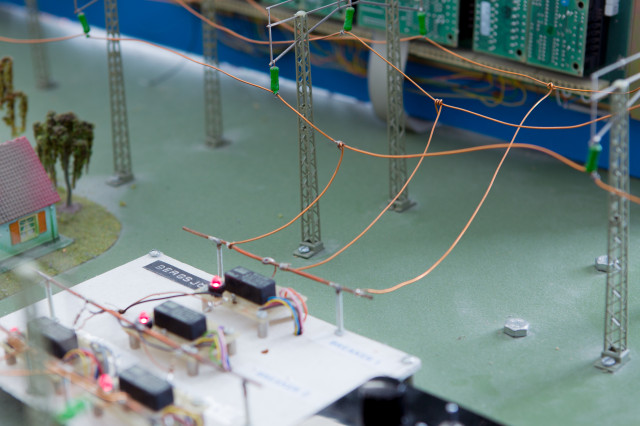Chaos and self-organization. The Gutenberg-Richter law. Fractal geometry. Mandelbrot diagrams. The 1/f distribution. The sandpile model. Applications in plasma physics.
ED2230 Chaos and Self-organization 6.0 credits
This course has been discontinued.
Decision to discontinue this course:
No information inserted
Information per course offering
Course offerings are missing for current or upcoming semesters.
Course syllabus as PDF
Please note: all information from the Course syllabus is available on this page in an accessible format.
Course syllabus ED2230 (Autumn 2010–)Content and learning outcomes
Course contents
Intended learning outcomes
Self-organization is a new way of addressing nature, economy, biology and many other aspects of man and environment. Described phenomena are typically far from static equilibrium, strongly influenced by the external environment and organize themselves through chaotic fluctuations.
Aim
Understanding for mechanisms that lead from chaotic behaviour to perfect order and harmony. Meaning of catastrophes like avalanches, earth quakes, stock market crashes and so on.
Literature and preparations
Specific prerequisites
120 hp in industrial economics or electrical engineering or technical physics including documented proficiency in English B or equivalent.
Literature
Mandelbrot B., The Fractal Geometry of Nature, New York, Freeman, 1983.
Prigogine I., From Being to Becoming, San Francisco, Freeman, 1980.
Tendler M., Kontroll över Kaos i Starkt Magnetiserat Plasma, Fysik-Aktuellt, nr 2, s. 25- 28, 1997.
Examination and completion
Grading scale
Examination
- ÖVN1 - Assignments, 6.0 credits, grading scale: A, B, C, D, E, FX, F
Based on recommendation from KTH’s coordinator for disabilities, the examiner will decide how to adapt an examination for students with documented disability.
The examiner may apply another examination format when re-examining individual students.
If the course is discontinued, students may request to be examined during the following two academic years.
Other requirements for final grade
After completion of the course the student shall be able to
1. explain the ubiquitous power laws emerging in different fields
2. apply power laws to Gutenberg – Richter statistics of earthquakes, starquakes and solar flares
3. describe the sand-pile paradigm and quantify the algorithm
4. show the robustness and sensitivity to initial and boundary conditions
5. explain the origin of the self-organization using the game of life as the example
6. use the self-organization paradigm in addressing density and temperature profiles in tokamaks
7. create a Java-implementation of one of the selforganizing systems
8. use the program to qualitatively hint at some of the attributes of the system
9. write a report where to describe the model and implementations
Examiner
Ethical approach
- All members of a group are responsible for the group's work.
- In any assessment, every student shall honestly disclose any help received and sources used.
- In an oral assessment, every student shall be able to present and answer questions about the entire assignment and solution.
Further information
Course room in Canvas
Offered by
Main field of study
Education cycle
Supplementary information
The course is learning-oriented with goal related lectures and with class exercises carried out as group work. The examination is continuous; it consists in participation at lectures, group works and in solving hand out exercises.
Replaces 2A1170